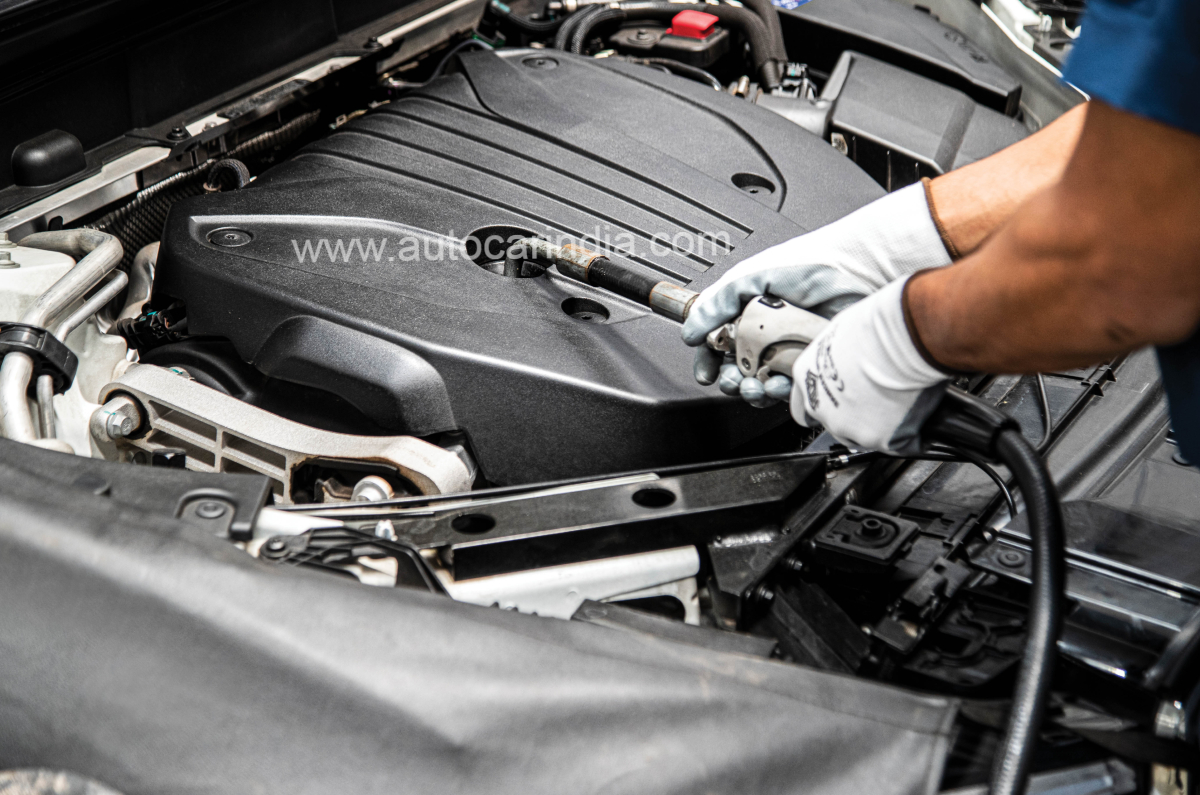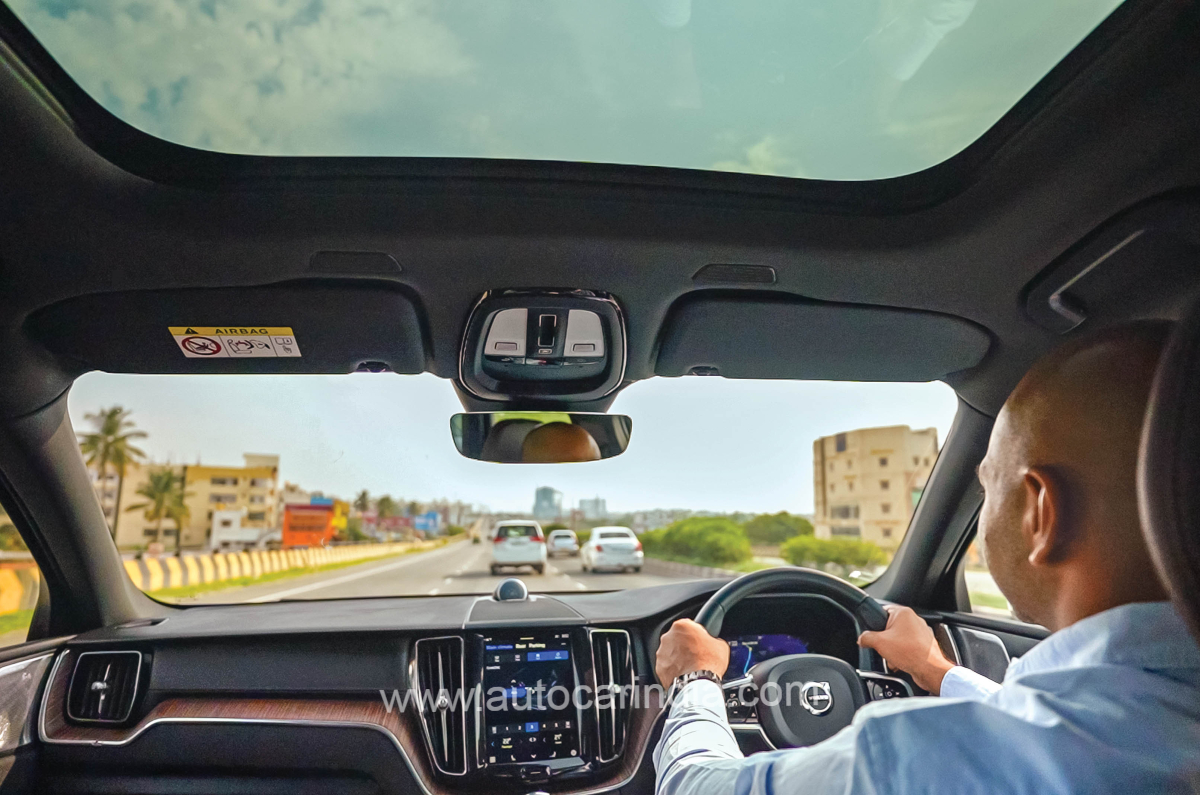While the arrival of monsoon in the country brings relief from the hot and sultry weather conditions, it also makes it that much more challenging for a car. You must remember that even before the monsoon has settled in, the tyres of your vehicle have already endured some of the extreme rigours of heat and humidity, especially if they are old. And that aspect could impact the ultimate performance and safety of the tyres. So here are simple rules for tyre health and safety, which are important all year round but even more so during the rainy season.
Depth Check
It’s not uncommon to see tyres worn to a smooth finish until they resemble race car tyres. And while the surface of a race tyre may look the same, they have enough rubber to offer plenty of grip and as soon as it drizzles, they are switched over for grooved tyres. Grooves help channel away water, and thus give tyres a better grip with the road, so it’s critical that these grooves have sufficient depth.
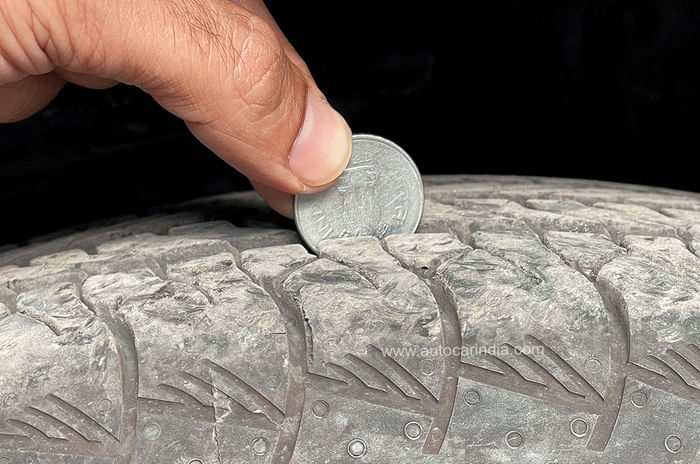
The minimum depth of the main grooves (called tread depth) should not go below 2mm. Checking this is also really very simple; most tyres today have a small marker between the grooves and once the tyre’s tread surface wears down and is level with the marker, the tyre must be changed. You can also check the tread depth with a one rupee coin – if the Ashoka symbol’s head on the coin is visible after placing it inside the tread, it’s time to replace the tyre.
Age verification
Modern tyres are engineered to withstand heat build-up, abrasion and cracking, but with age and extreme working conditions, even the best products wear down. Tyres exposed to long periods of heat can affect the physical characteristics of their core material – rubber. They tend to get hard and hairline cracks develop (especially on the load-bearing sidewalls), and this affects the overall performance of the tyre and, in some cases, can lead to a blowout. So if you see any visible damage on your car’s tyres, like large cracks and cuts, it’s time to replace them with new ones.
Even if your tyre’s condition and tread depth are good, you may still need to change them because just like food items, tyres too come with an expiry date as the rubber gets brittle with age. Most manufacturers claim a maximum of 10 years from the date of manufacture as the life of a tyre. The manufacturing date is typically stamped on the tyre itself – usually in an oval window – in a code indicating the week and year it was made. So if you see the number 0323, it means it was manufactured in the third week of 2023.
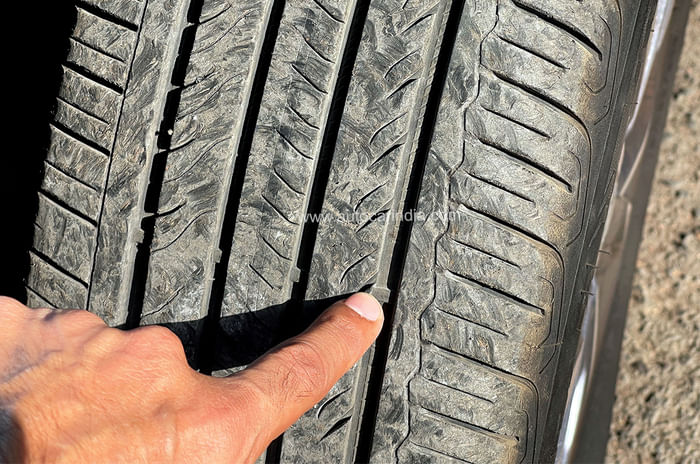
Firm footing
Traction is considerably less on wet roads as even with good grooves, water cannot be entirely dispelled. Furthermore, along with water, there can be some oily substances, and this is especially true with light rain after a long dry spell.
Thus, driving slowly and carefully is really the best way to keep a firm footing and limit the consequences of aquaplaning. Aquaplaning or hydroplaning is when a thin layer of water gets trapped between the surface of the tyre and road. When this happens, the tyre loses grip with the road and if this happens to all wheels together or during critical driving situations like cornering and braking, it can be disastrous. Besides lowering your speed, you can also do a few more things.
Switch off cruise control
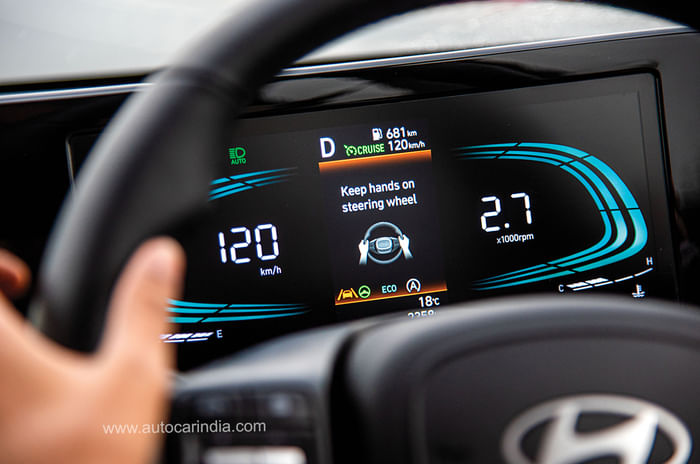 Cruise control will constantly maintain a set speed and will not adjust for puddles and varying rain.
Cruise control will constantly maintain a set speed and will not adjust for puddles and varying rain.The amount of water on the road surface will always vary as will the rain, so it’s best to switch off cruise control when it’s wet. Cruise control simply maintains a set speed; even the newer adaptive cruise control systems only respond to traffic conditions and cannot anticipate changing water conditions and levels like a driver can. Thus, it’s best to have a measured and manual control of the throttle and brakes.
Slow down for puddles
Puddles can be tricky for many reasons: they can hide large potholes, they are often muddy and mucky, which makes water evacuation more difficult for the tyre, and even clear puddles can cause a kickback on the tyre going through it. You will have probably felt this strain on the tyre like a push back; it’s basically the increased resistance the water creates. Thus, for all puddles, slow down, and if the puddles are deep and you cannot gauge the level of water, stop and observe the surroundings and try to ascertain the level. If you still are unsure, walk through it before you drive over it.
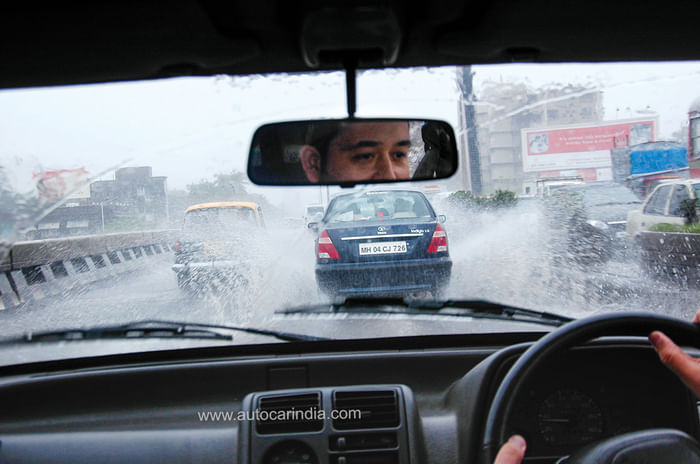 Puddles can destabilise your car, and splashing water isn’t polite either.
Puddles can destabilise your car, and splashing water isn’t polite either.Keep a larger safe distance
As you increase your speed, the stopping distance also increases exponentially, and in the wet, this is even more so. Maintain a safe distance from the vehicle in front of you, ideally this is, at the very least, two seconds in the dry and in wet conditions more so. Also, remember to be gradual when stopping as other vehicles may have an even longer stopping distance than you. While your tyres may be fine, there’s a chance theirs may not be in proper shape.













